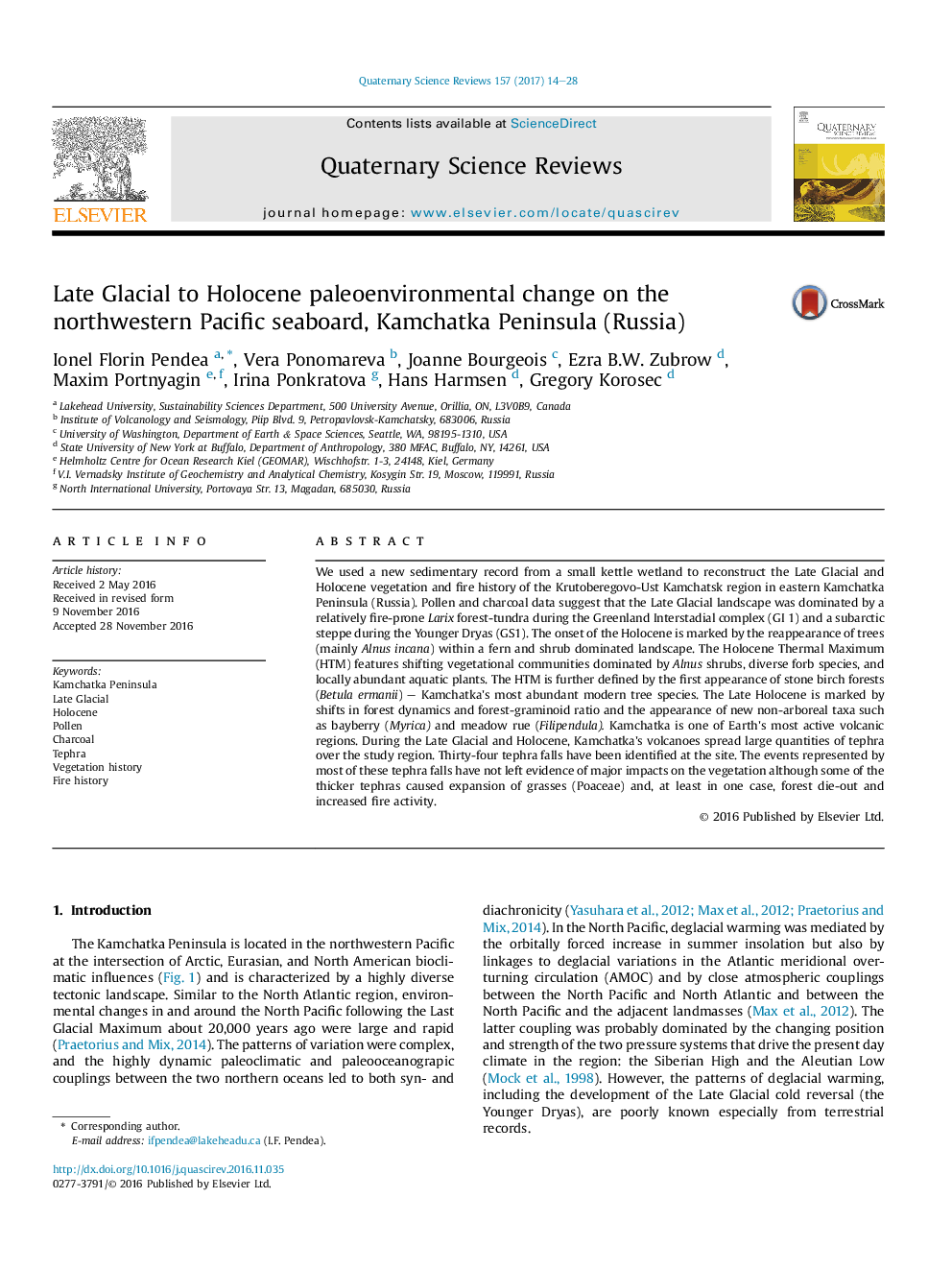| Article ID | Journal | Published Year | Pages | File Type |
|---|---|---|---|---|
| 5786853 | Quaternary Science Reviews | 2017 | 15 Pages |
Abstract
We used a new sedimentary record from a small kettle wetland to reconstruct the Late Glacial and Holocene vegetation and fire history of the Krutoberegovo-Ust Kamchatsk region in eastern Kamchatka Peninsula (Russia). Pollen and charcoal data suggest that the Late Glacial landscape was dominated by a relatively fire-prone Larix forest-tundra during the Greenland Interstadial complex (GI 1) and a subarctic steppe during the Younger Dryas (GS1). The onset of the Holocene is marked by the reappearance of trees (mainly Alnus incana) within a fern and shrub dominated landscape. The Holocene Thermal Maximum (HTM) features shifting vegetational communities dominated by Alnus shrubs, diverse forb species, and locally abundant aquatic plants. The HTM is further defined by the first appearance of stone birch forests (Betula ermanii) - Kamchatka's most abundant modern tree species. The Late Holocene is marked by shifts in forest dynamics and forest-graminoid ratio and the appearance of new non-arboreal taxa such as bayberry (Myrica) and meadow rue (Filipendula). Kamchatka is one of Earth's most active volcanic regions. During the Late Glacial and Holocene, Kamchatka's volcanoes spread large quantities of tephra over the study region. Thirty-four tephra falls have been identified at the site. The events represented by most of these tephra falls have not left evidence of major impacts on the vegetation although some of the thicker tephras caused expansion of grasses (Poaceae) and, at least in one case, forest die-out and increased fire activity.
Related Topics
Physical Sciences and Engineering
Earth and Planetary Sciences
Geology
Authors
Ionel Florin Pendea, Vera Ponomareva, Joanne Bourgeois, Ezra B.W. Zubrow, Maxim Portnyagin, Irina Ponkratova, Hans Harmsen, Gregory Korosec,
